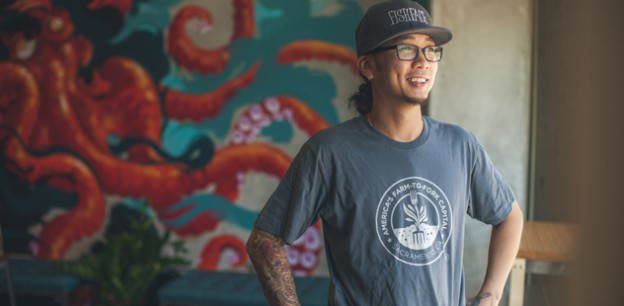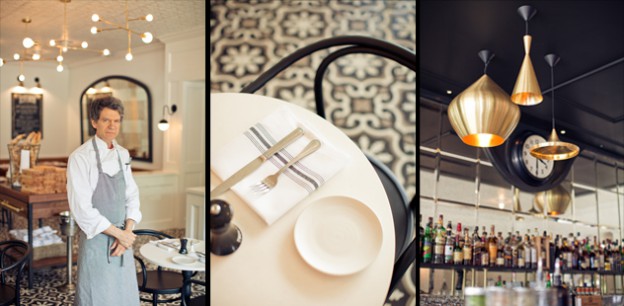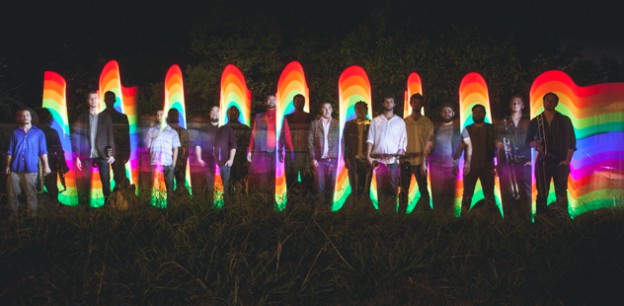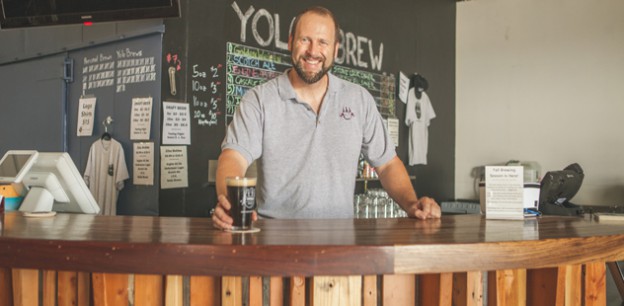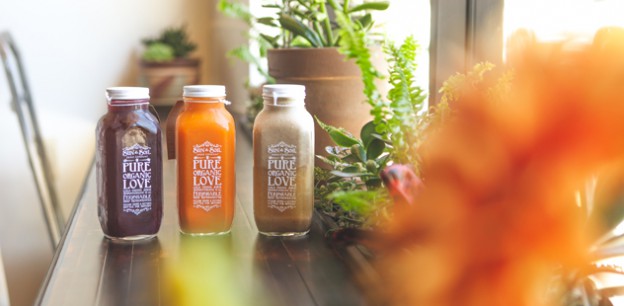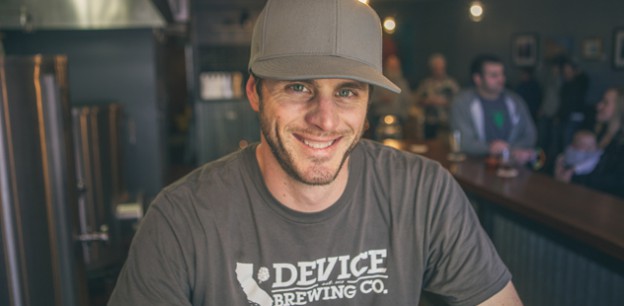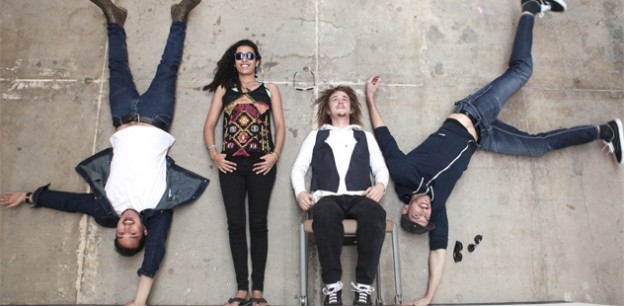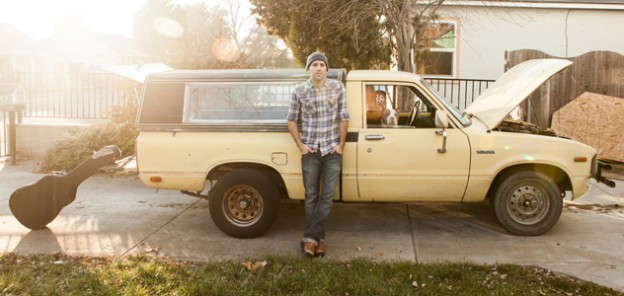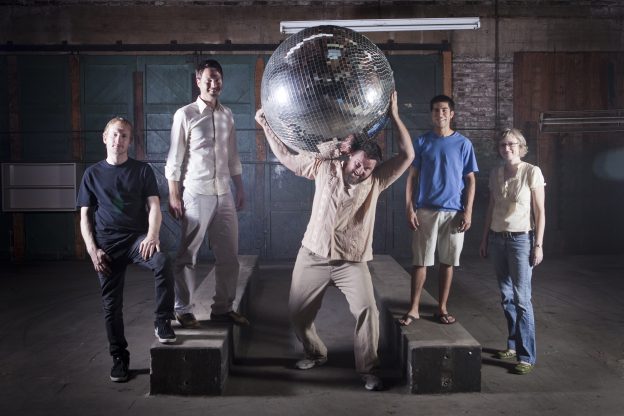Chill Vibes
As the noble salmon swims upstream, battling the current during its long journey from the sea to the rivers and streams of its birthplace, it never loses sight of its mission—to arrive at its final resting place in the waters of its birth. Billy Ngo, the man who redefined and refined the ritual of eating sushi in Sacramento with his venerated midtown fish house, Kru, is very much like the salmon—driven by a singular mission to dazzle the palates of everyone who bellies up to his sushi bar.
Like most of those who have come up through the ranks of the gastronomical arts, Ngo started at an early age. He cut his culinary teeth among the humble class of busboys but soon crawled out from under the mountain of food encrusted, castaway dishes of the sink and into the fires of the kitchen. As his culinary skills grew, so did his reputation. Notably one of the best chefs in Sacramento, Ngo has legions of fans, is well-respected by his peers and is constantly looking to elevate his fish game—his menu at Kru is a testament to his visionary approach to cooking with dishes like beef tongue that arrives in a swath of wasabi and mustard aioli and, quite possibly, the best bowl of soup in town with his duck confit ramen in sumptuous and deeply seasoned spicy miso broth.
Not one to rest on his epicurean laurels, the chef/owner of one of the most inventive sushi restaurants in the region is expanding his vision and looking to the islands of Hawaii for inspiration with his latest venture, Fish Face. The dining experience at Fish Face is casual. It’s a laid-back joint that serves one thing, and one thing only, poke. Diners select the fish from a variety of aquatic offerings—from the tame, like salmon and tuna, to the exotic like thinly sliced octopus—along with the sauce and other accoutrements such as jalapeños, avocados and daikon sprouts that will adorn their fresh catch.
Submerge recently hooked up with Ngo at his new digs in the Warehouse Artist Lofts building to talk about the inspiration behind bringing this raw fish salad from the shores of Hawaii to the streets of Sacramento and his experiences coming up in the local food scene.
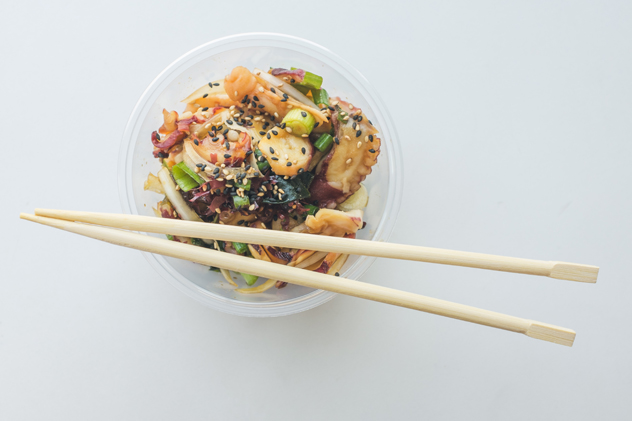
What inspired you to start cooking?
Well, I don’t really cook, I just cut fish [chuckling]. Really the first job I ever had was at a Japanese restaurant as a busboy and then moved up to working to the sushi bar as a sushi prep [cook], but it was just a job to me—I didn’t really care. Then I went to college, but I didn’t like that, [being] in the classroom so I just started really doing what I was doing so I was like, “If I’m doing this, I want to be really good at it,” and then just bounced around from different places learning different stuff, then I wanted to open my own place because if I want to work, I want to work for myself.
What was your first restaurant?
Kru. It’s been 10 years now.
I heard Kru is moving. Why move and where are you moving to?
East Sac, the Andiamo building on Folsom and Alhambra. The reason for moving is the space we’re in. I love the location, it’s awesome, but we just outgrew the space and it’s an old building. You know, Celestin’s was there for about 15 years then a couple of other restaurants and then we took over, so it’s just an old building that’s falling apart. Also I just want to get a real grown up kitchen. Right now that space is so tiny, the kitchen is the size of a closet—it’s just a hallway and you’ve got three guys in there bumping into each other. We do really cool, fun stuff out of that space right now and people see what we’re working with, it’s crazy. So it’s kind of cool to have a real kitchen for the team to work out of. We’re going to be splitting it with The Selland’s Group. They’re going to be doing a restaurant there so it’s perfect because we’re good friends and we’ll be neighbors now.
When will the doors to the new Kru open?
It’s projected for November, December, so I say maybe February, March, April next year.
What was your experience like interning at The Kitchen?
It was awesome. Before I only worked in Japanese restaurants doing sushi, and when I realized I wanted to open up my own restaurant, I went to culinary school because I always knew that if I wanted to open up my own restaurant I needed to know both sides … I went to dinner there right before I went to culinary school and it just blew me away—the service, the ingredients. I talked to Randall that night and said, “I’m going to culinary school and when I come back I want to do my externship here,” and he said yeah.
What was the biggest takeaway you got from working at The Kitchen?
The most important thing is your ingredients—working there I learned you don’t go cheap on the ingredients. You start with a good ingredient and you don’t have to do much to it. I worked at a lot of places where I didn’t know about quality and then working there I learned that there is way better stuff out there and you can’t go cheap. You get what you pay for. That’s what they do at The Kitchen, Randall never compromises on quality.
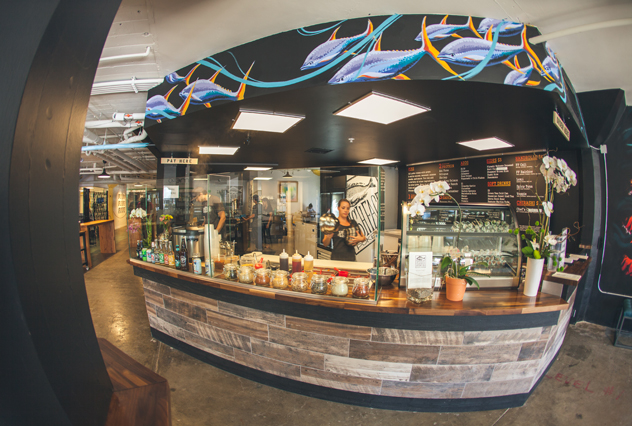
With your new venture Fish Face, what was the inspiration for bringing poke to Sacramento?
It just felt like it was something we needed in Sacramento, there’s nothing here like that. One of our partners, we have four partners here, she loves poke. We were in Burbank for me to film Cutthroat Kitchen, and we went to this little poke bar and I thought, “This is such a cool concept. It’s a super casual vibe, super chill,” and she said, “I wish there was something like this in Sacramento,” and I’m like, “Why don’t we just open one, we already have a sushi bar, we already have connections to fish and it will be so easy.” Then we came back and I threw around the idea with my business partner at Kru. Then this place popped up, but we couldn’t cook here because there’s no hood and then we thought, poke!
What was it like being on Cutthroat Kitchen?
It was interesting. It was a good experience, but going through the filming and seeing the TV magic it’s pretty crazy. What you see on TV, the 20 or 30 minute show takes like 18 hours to film. The kitchen part is real, but there are so many times that you film the action. It’s not just them filming you during the competition, it’s a lot of retakes just to make it look good for TV. It was a long day, then you have to come back the next day to do the interviews. The worst part of it is your sitting in the back just chilling until they call you to come out to do the next scene or whatever they need you to do, so it was interesting but it was fun.
I had the pleasure of eating your dish at Have Another Offal Day last year, but what I really noticed was the camaraderie among you and the other chefs that were participating. Are you all just one big happy family?
Yeah! Sacramento is really special and different because all the chefs really do get along, in other cities it’s more competitive. Here we call each other up and say, “I ate at your restaurant last night and that sausage was really good, can you give me the recipe?” We all share and we all support each other to make the restaurant scene better as a whole. Something like Have Another Offal Day is like a big party to us. We just hang out, we’re all drinking with each other and it’s something fun for us to get together and do outside of our restaurants.
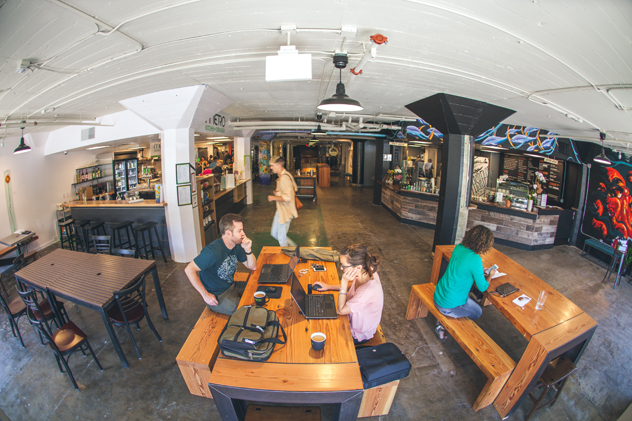
Fish Face Poke Bar is now open at the WAL Public Market, located at 1104 R Street, Sacramento. You can learn more about the restaurant at Fishfacepokebar.com.
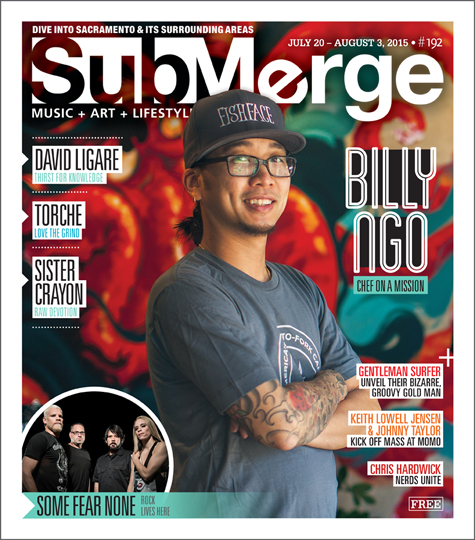
Changing with the Times
In the ’80s, the culinary landscape in America was at a crossroads: Across the nation voracious diners were relinquishing their steak knives, and squeamishness, in favor of a pair of chopsticks to embrace sushi’s raw state; chefs were dabbling in inexplicable versions of tried and true favorites (Wolfgang Puck’s experimentations with pizza come to mind); while others toyed with our appetites entirely with nouvelle cuisine—you know, those overwrought, outrageously priced plates that displayed more porcelain than actual food. It was indeed a brave new culinary world.
During that same time a local gastronome was taking on the dining scene in Sacramento. Unlike some of his contemporaries, Randy Paragary refrained from such novelties and instead focused on composed, yet accessible, dishes when, in 1983, he opened the doors to what would become the flagship of his epicurean empire, Paragary’s Bar and Oven.
Over the last 30 years the venerable eatery played host to marriage proposals, birthday celebrations and business negotiations. But during its tenure as one of the best restaurants in town, owners Paragary, his wife Stacy and chef Kurt Spataro decided it was time to do their own restaurant makeover—updating not only the bistro’s façade, but its interior, patio and menu. So, last spring the duo shuttered the doors and embarked on the journey to reinvigorate the esteemed establishment.
For 15 months, diners held their collective breath in anticipation of the million-dollar rebirth of Paragary’s Midtown gastronomical mecca. They were rewarded for their patience with a decidedly French take on the classic that’s modern without being too heavy-handed in its design—subtle touches are sprinkled throughout the space that are evocative of both old world charm and a nod to modernity. The updated menu mimics that sentiment as well. A few of the hits include fluffy pillows of sheep’s milk ricotta gnocchi intertwined with luscious chanterelle mushrooms, sweet corn and fava beans afloat in a parmesan brodo; a bold mesquite grilled quail dish intermingled with sweet corn soubise, fennel and arugula sprinkled with bits of bacon in a sweet bourbon marmalade; and an appetizer of thinly sliced, chilled lamb’s tongue adorned with frisée, French breakfast radish and a sauce gribiche—an herbaceous mayonnaise-style, egg concoction riddled with the briny goodness that only the caper can lend.
Submerge recently sat down with Spataro to chat about the old, the new and the unexpected at the new Paragary’s.
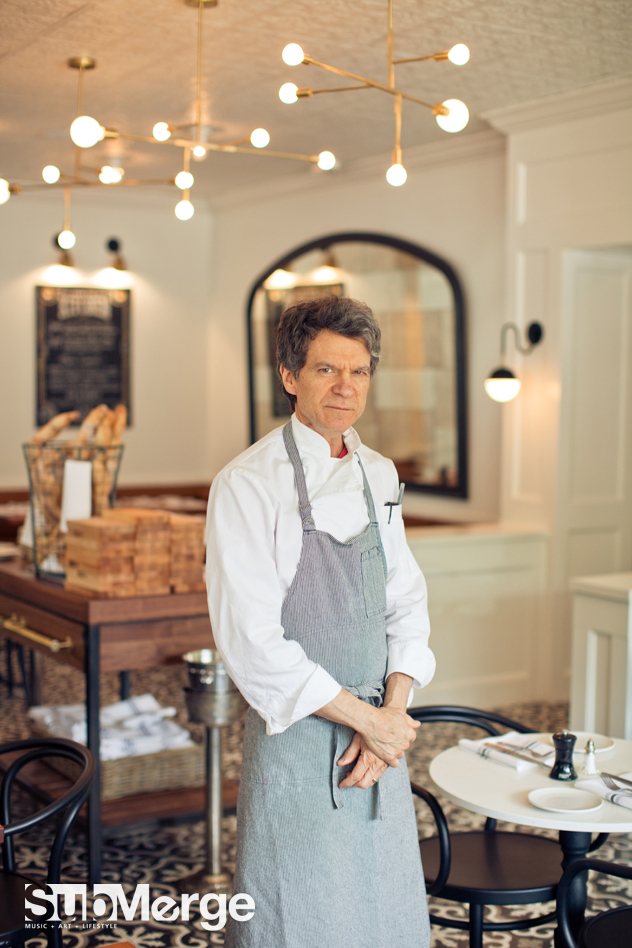
What is the inspiration for the food that you’re doing here now?
When I was very young, maybe 19 or 20, I stumbled upon Chez Panisse in Berkeley … I had dinner that night and it had a really huge impact on me. [When] the Chez Panisse menu cookbook came out, I got a copy and I read it like a novel, from cover to cover, and I cooked my way through it. That whole experience, discovering Chez Panisse, going there and eating as much as I could, collecting the menus, studying the menus, studying that book [and] using my experiences at Chez Panisse as a reference really set me in a direction. That experience was very formative.
What was the reason for revamping both the space and the menu?
The space needed it, for one. It really needed to be updated. I think the menu is a collaboration between myself and the chefs … and the history of Paragary’s certainly influenced the menu, but there are so many things that have happened since Paragary’s opened 32 years ago, in terms of the culinary scene, and we wanted to incorporate those things [but] still be somewhat faithful to the original concept.
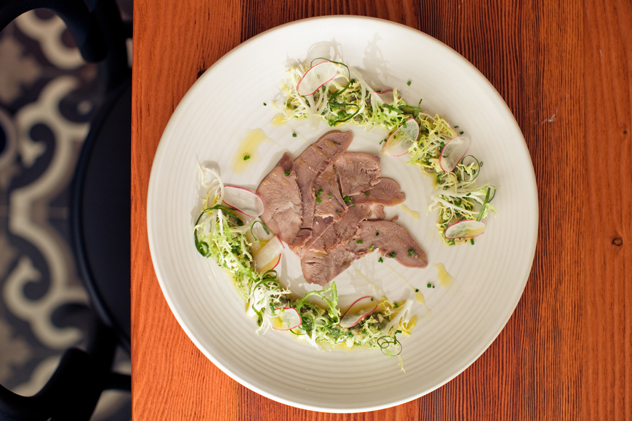
What was the most audacious food trend when Paragary’s first opened in 1983?
Things that were introduced at that time, you know, goat cheese was kind of a new product at that time, and things like sun-dried tomatoes. So, I guess what was silly about it was some of those things got overused. Soon there was sun-dried tomatoes on everything and goat cheese on everything. So, that to me would be it—the overuse of trendy stuff.
I saw chilled lamb’s tongue on the new menu. What’s your take on “snout to tail” eating?
I think it’s great. Chefs like the weird stuff. We like to use interesting things. It’s not that interesting to cook a boneless chicken breast, or challenging. It’s much more interesting and challenging to take something like a lamb’s tongue, or oxtail, or tripe, you know, something that is very unappetizing in its raw state and you have to use a lot of technique to make it delicious. So it’s always fun and rewarding to take something like an underappreciated ingredient and apply technique and time to it and make something delicious that you would never make at home.
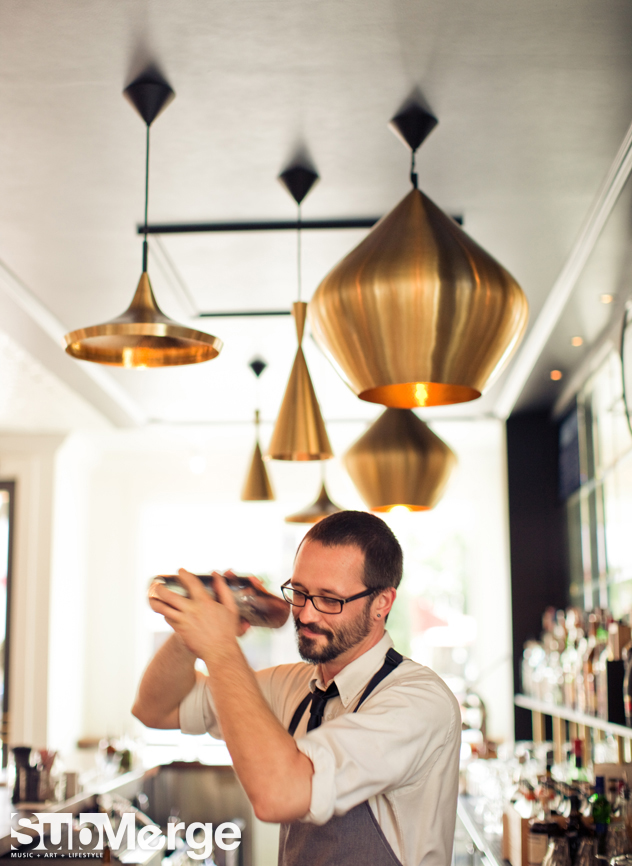
What do you think is the most significant change to the restaurant?
Physically, I would say it’s completely different. I think the spirit is very similar; it’s intended to be comfortable and a place where you can come any time of the day and feel comfortable … but the appearance is the most strikingly different thing.
Was there anything in the restaurant that is no longer here that was heartbreaking to lose in the redesign?
I don’t know if you remember the mural that was painted on the ceiling; that was there from day one and it was hand-painted by someone. So seeing that being peeled off of the ceiling was … well, it wasn’t sad, but it was, “Wow, we’re really changing things.”

How do you stay relevant in an industry where diners are fickle and restaurants come and go?
I think you really have to pay attention to what’s going on, and there’s so much information out there from food blogs to magazines, cookbooks. I’m a voracious reader and collector of cookbooks, and traveling and going out to eat at other restaurants, all of it. Really trying to stay abreast.
Being in the business for so long, what advice would you give to a young entrepreneur thinking about getting into the restaurant business?
Besides, don’t do it [chuckling]? I think my advice would be, just be really sure of what your concept is. Secondly, don’t overextend yourself. I think it’s a mistake for a first-time restaurateur to go deep into debt. I think it’s smarter to create a more modest concept, sort of prove to yourself and to your customers that this is going to fly. In order to mitigate the risk it’s smart to start small—really be clear on what your concept is and do it great.
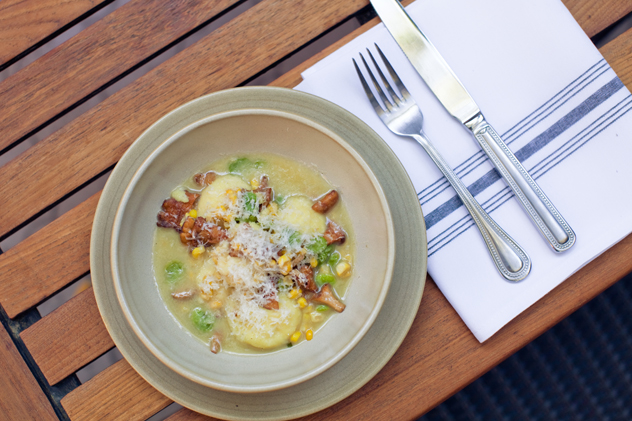
What is the most remarkable change that you have seen in the local food scene?
The level of sophistication and quality. I think the bar continues to get raised each year and that’s great for the diner, because the restaurateurs have to compete with each other and the chefs have to compete with each other. So the more people out there doing good things the more we have to step our game up.
Paragary’s Bar and Oven is located at 1401 28th Street in Sacramento. For more information, go to Paragarys.com. You can also call (916) 457-5737.
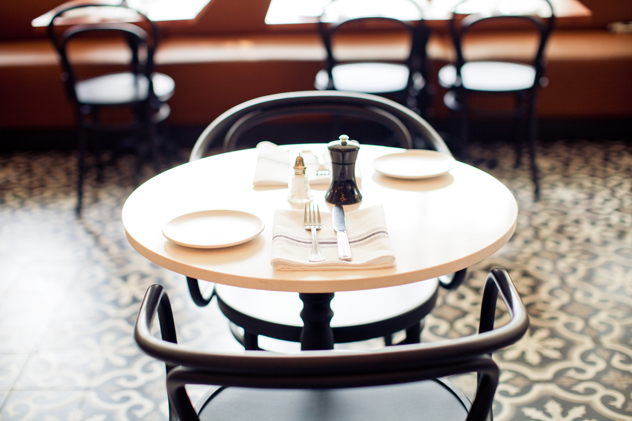
Sacramento’s Ideateam puts their spin on influences new and old
Anyone ever asked to step up to a classroom-style white board to write down some answer they didn’t know probably had an abridged Hail Mary prayer running through their head, hoping that a light bulb would go off and save them from the painfully drawn-out scene soon to follow. Even without the pressure of a time limit and a group of judging eyes upon him, 26-year-old guitar player Justin Butler still found himself at the mercy of an empty white board late one night after returning to the studio from an explosive two live sets he had just finished playing with his newly formed Sacramento funk band, Ideateam.
Luckily for him, though, the light bulb he needed went off at just the right time.
“I remember wiping it all the way clean, and it was just a blank board,” he says of the band’s rehearsal set list at the time. “And for whatever reason that concept came to me at that point. And it was fitting.”
Butler is referring to three symbols he thought of in that moment of reflection, which, coupled with the then-million-dollar question facing Ideateam, ultimately became the name of their debut album: And What Now (&!?).
Nearly two years later and after some key new additions to the group (mainly in the horn and percussion sections), the nine-man ensemble has finally picked a release date for their long-awaited project, to be held on Oct. 31, 2014, at Harlow’s, an album premiere party and live performance alongside local acts ZuhG and James Cavern and the Council.
While this would be their official inaugural show for the album, the upcoming Harlow’s gig is far from Ideateam’s first rodeo.
Even before completing And What Now (&!?), Butler and fellow guitar player/bandmate Tim Snoke say they’ve been playing live fairly consistently for the past year. Whereas they used to think two gigs a month was busy enough, now they say they’re having to turn down offers because of how booked they are already.
“It’s one of those things where you don’t want to sound full of yourself or anything, but people continually say things that blow me away more and more,” Butler says. “When you have a good friend of yours who also happens to be a musician, and they tell you you’re their favorite band in town, that does something to me. That’s a really humbling thing to be told.”
The reason behind their bubbling reputation could lie in the unique sound Ideateam brings to the table, says Tim Snoke.
“There’s like a groove-based music [here], but there’s kind of a flavor that we retain that I don’t see a lot of other groups doing around town,” he says. Snoke also believes groove and dance-based music is making a “turnaround in this area” and that people are starting to embrace funk as a comeback genre again.
Drawing inspiration from artists new and old from Mandrill and the Meters to more contemporary bands like Orgone and Lettuce, Ideateam’s music resonates like a nice mashup of classic funk and soul with sprinkles of Latin jazz and even nuances of reggae thrown into the mix.
“I’ve heard it described before as a pretty powerful sound,” Butler says. “I mean, it’s heavy.”
While both guitarists agree that much of their success thus far is of their own doing, they also say their friends in the Sacramento music scene—which is pretty tight-knit, according to Butler—have been a huge help by letting them open for different bands in the area and build a name for themselves.
“I would just like to say for the record, we have really awesome friends who have been super generous that we’ve just known in the music community here,” Snoke says.
“We definitely had some people champion for us,” Butler adds.
As polished as Ideateam sounds on their studio record—where each instrument was tracked individually and layered as opposed to recording one group take at a time—Butler and Snoke say seeing the band live is truly an experience to behold in its own right.
“It’s different,” they both say simultaneously.
“[Us] live, there’s a different energy happening for sure that’s a little more… I wouldn’t say more, but there’s a different sauce on there,” Snoke says.
“There’s some more hot sauce,” Butler adds with a smirk, finishing his bandmate’s thought.
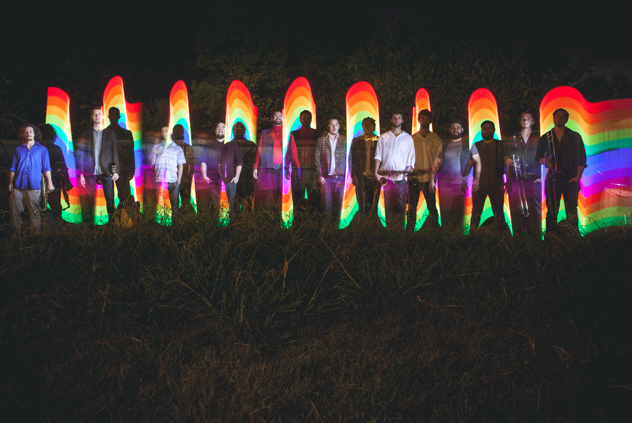
On stage, Ideateam’s lineup consists of a three-man rhythm section, two on percussion and three on horns with one extra member, Garrett Wildgust, contributing vocals every now and then.
Butler and Snoke are on the guitars, Kyle Pulskamp plays bass, Joe Carusi handles the drums, Mark Miller and Chris Ryan manage the saxophones while Josh Cambridge toots the trombone, and Mike Ruiz—the madman of auxiliary percussion—taps on and shakes up an array of instruments to fill in the pockets of any given song.
The band has performed as far north as Chico and as far south as San Francisco at the Boom Boom Room blues club on Fillmore Street.
A typical Ideateam set will feature a couple songs from their album (which are practically ancient to the team nowadays), a few new songs they’re prepping for their upcoming project and then some even newer material that they’re just starting to refine now. They’ll also play some B-side covers for all the crate diggers who are wise to the hidden gems of those funk and soul classics.
“I kind of like that there’s going to be those few people out there that when we do play those more deep cuts that they’re like, ‘Oh yeah!’ ‘Cause I’m that guy at a concert,” Snoke says.
Although Ideateam has only played regionally as of late, Snoke and Butler say they’d love to take the band on a West Coast tour starting up in Washington and going down to Southern California. Realistically, however, Butler says an effort like that will take some thorough planning for a band of this size.
“Truth be told, our real restrictions are our day jobs,” he says. “Otherwise we probably would have gotten out of town already and just done it.”
Their jobs range from Farm to Fork restaurant chef to delicatessen worker to professional musicians. Butler and Snoke work together at an E-commerce company mediating online transactions for vendors in the hardware and lighting fixture industry. It figures that at least a couple of Ideateam members would be dealing a lot with light bulbs on a day-to-day basis.
Still, even with their daily life limitations, Butler and Snoke are trying to stay optimistic about their musical futures.
Being grounded in the now and looking further down the road is a balance Ideateam constantly has to wrestle with. Making that leap into full-time musicianship is something they’re open to but also cautious about at the same time.
Snoke says he would love to see that happen one day but that mainly he’s focused on the dynamic of the band right now and evolving their music.
Butler says he agrees with Snoke in that regard. Yet, he also says a decision on Ideateam’s future will have to be made eventually.
“I foresee us approaching a fork in the road at some point next year where we’re going to kind of have to look around us and be like, ‘OK, we’re investing an incredible amount of energy times eight, times nine. What are we doing?” he asks.
Alas, the crucial question still stands for Ideateam: And what now?
As a young and up-and-coming band with so much momentum behind them, it’ll be interesting to see where they take it from here. So long as they stick to their funky jams and keep the feel-good music coming, I have a feeling they’ll always have a place here in Sacramento. Or wherever they end up going, for that matter.
It’s not just a CD release party, it’s Halloween at Harlow’s Oct. 31, 2014! To quote ZuhG’s facebook invite, “It’s time for Sacramento to get a freaky dose of spookygroove, so pop those eyeballs out and get your skull prepared to be electrified.” Doors for this 21-and-over show are at 8 p.m., with a $12 cover. Celebrate Ideateam’s CD release along with ZuhG and James Cavern and the Council, and stick around for the costume contest. For more info, visit Facebook.com/ideateamband.
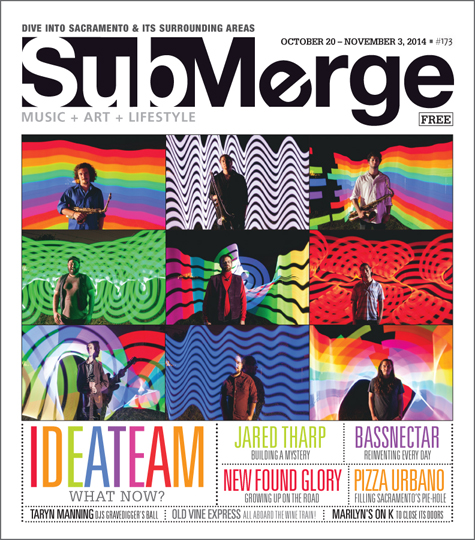
Yolo Brewing Company
1520 Terminal Street • West Sacramento
A West Sacramento Saturday at Yolo Brewing Company looks slightly different, and smells slightly different, than you’d imagine for a taproom. A rolled-up warehouse door reveals long tables and stools; a lineup of human-sized kettles at one end, an L-shaped bar in a far corner; and side tables covered in packs of grains, malts and spices. The smell is of a homebrewer’s kitchen—of sweet, simmering roasty grains. This part brewpub, part personal brewery is Michael Costello’s Brew It Up reincarnate in full swing.
Costello first built Brew It Up in 1996 in Davis and was the majority owner. For seven years it thrived purely as a brewing kitchen. The location did some small-scale distribution but didn’t have any food. He then moved it to Sacramento, where it became a personal brewery and grill, complete with a 200-seat restaurant, 24 taps of Brew It Up’s own beer, 30 wine selections and a massive 60-item dinner menu.
The place wasn’t too big to fail—on the contrary, it stayed busy for eight years and pushed out thousands of batches of beers. But like much of downtown in 2011, the economic crash forced the brewery to shut down.
Since then, Costello says, a similar business model for personal brewing didn’t pop up but hundreds of people reached out and asked him what was next.
“It kept the wind under my wings to push forward,” he says. “Yolo is the outcome of that; and not just the outcome of my efforts, but a group of another dozen people who rolled up their sleeves and put their own money in to start.”
The new vision of Costello and his partners includes being a regional brewery that distributes in Northern California and being a destination where people can walk in and try small batches. And, of course, if customers want to get more involved they can create their own beers.
“It has the core elements of Brew It Up, but the vision and direction is not the same,” says Costello one early morning while setting up shop. “It’s 15 to 20 years of learning and making mistakes and doing things right and wrong.”
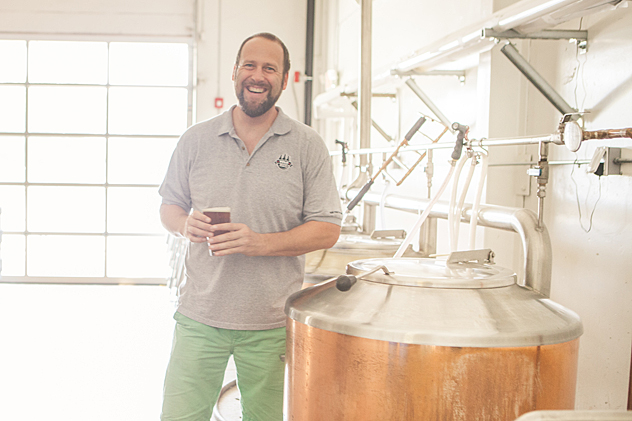
Beer lovers and their friends may schedule to brew their own batches with a Yolo brewmaster in three-hour sessions on the weekends, taking home their creation after the brewery takes care of all the dirty work (like kegging, bottling and OCD-level sanitation).
The large, open warehouse is starkly different than Brew It Up’s old Downtown Sacramento location, but the beers on tap, atmosphere and experience are just as good, if not better.
“The customers work right alongside our brewmasters, create a recipe and go through the whole brewing process, and we take care of everything else.”
Costello first came up with the personal brewery idea 15 years ago as a homebrewer and UC Davis graduate with a degree in fermentation. He was frustrated with the cumbersome process and time consumption of brewing at home with such small results.
“It was hard to perfect brewing unless I did a lot of it, so I liked the idea of having somewhere you could go with someone with experience,” he says. “Then I or a customer could go in and successfully brew a batch of beer, with relative ease and minimal discomfort, without having to do it six to 10 times a year in order for it to be good. There are homebrewers who are really good at it because they’ve practiced it so much and I don’t have anything to really offer them. But for those who only do it a few times a year, this is ideal.”
Costello notes that even though IPAs, double IPAs and sours take up most of the press in the beer geek world, customers have come in to make all styles.
“That’s a fun checkpoint for us,” he says. “When people are brewing their own beer, that’s a commitment, so it’s a demo for us of what people like and what they might want to drink in the brewery.”
When the brewmasters aren’t helping new and current homebrewers perfect a batch, they’re brewing at least 12 of Yolo’s own beers, including a Scotch ale, double IPA, orange blossom blonde and oatmeal stout.
It seems like a lot of beers for a brewery less than a year old, but Costello says the Yolo team was ready and experienced enough to do it.
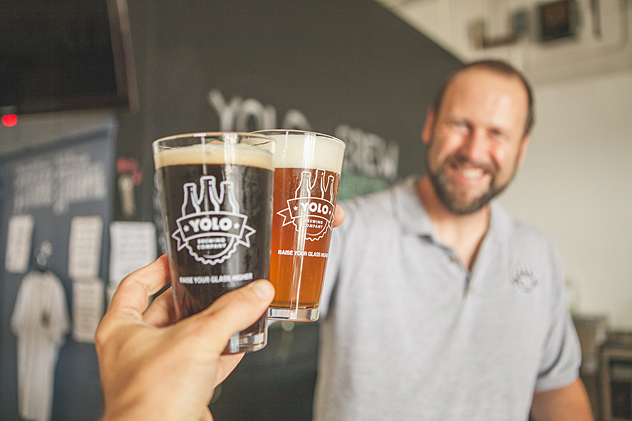
“We’re actually restrained at 12 but our tap system is set up to handle 28,” he says. “A lot of breweries that get started, especially the small breweries, for many of them it’s their first time brewing professionally, or running a business and having employees. It may also be their first time going from brewing 5- or 10-gallon batches to production size. Because I’ve been doing this for 15 years we already had the recipes down.”
That’s where the second part of Yolo’s vision comes in. Costello knows that after so long, to keep the business from going stale, it’s important to offer the customer new and different ideas. Using the small batch kettles in the brewery, he and other brewmasters are able to try more seasonal, local varieties.
“There are so many good beer recipes and so many different things you can do that are creative, especially the one-off specialty beers like SMaSH beers that use just one hop and one malt. You could do that 12 times a year and have 12 different beers,” he says.
While the Yolo team gets to experiment in-house, Costello also plans to grow one county at a time in California, brewing larger production as the brewery gains more customers and more success.
His eventual plan is to start canning in the first or second quarter of next year. Prior to that, Yolo will have 22-ounce bottles available at Nugget Markets and Total Wine in the next few weeks. Costello adds a few local pubs and restaurants are ready to take Yolo beer on tap when the brews are ready. Customers can also fill growlers on site, including the new EcoGrowler, a recycled, collapsible container that can hold 64 ounces and looks like a giant Capri Sun.
“But as we scale up, and are able to brew on large production, we can still turn to those small batch kettles,” he says. “The engine for Yolo is the small kettles.”
Here’s to at least another 15 years, and most likely more.
Check out Yolo Brewing Company Thursdays and Fridays from 3 to 9 p.m., Saturdays from 11 a.m. to 9 p.m. and Sundays from 11 a.m. to 8 p.m. Food trucks are in the lot for lunch and dinner. Yolo is located at 1520 Terminal Street in West Sacramento.
Sun & Soil Juice Company
1912 P Street • Sacramento
Brought together by a common love for blown glass, metal sculptures and film, friends turned business partners Molly Brown and Tatiana Kaiser discovered yet another area to bond over: health as a lifestyle, not a trend.
The two women opened the Sun and Soil Juice Company in early June with only six part-time employees and a colorful menu of raw and organic juice and smoothie choices to offer Midtown Sacramento. In just one month, the Sun and Soil staff doubled and the demand for healthy and creative liquid nourishment is apparent in the company’s daily glass bottle returns, hundreds of pounds in weekly pulp weight, and its growing number of regular customers.
“We had 75 bottles returned yesterday,” says Brown with a smile. “People are on board for recycling, reusing and cutting down on waste, which is good.”
Sun and Soil operates as a zero-waste business. For every glass bottle returned, customers receive either $2 cash or two bucks off their next visit. Brown, Kaiser and their staff also use a limited number of plastic products, recycle all cardboard and even built a relationship with ReSoil Sacramento, a company that distributes Sun and Soil pulp to community gardens.
Despite diet trends like the Paleo “caveman” challenge, the Atkins “no-to-low-carb” regimen, or even something called the “Beyoncé cleanse” with its strict conditions of cayenne, honey and water (seriously) recipe, Brown and Kaiser simply aim to provide customers with choices, rather than restrictions.
“Health is not a fad. It’s your health,” says Kaiser. “Everybody is dealing with different situations all the time. You should do your own diet, as in the food that you eat, and listen to your body.”
For Kaiser, organic juice is an essential part of her daily diet because it directly improved her overall health and quality of life. She lives with colitis, a digestive disease that makes it difficult to eat a variety of solid foods and absorb essential nutrients. Brown, with her longtime taste for raw and organic sustenance, met her new friend and future business partner in a glass-blowing class. It wasn’t long before she gifted Kaiser a juicer and the seed was planted.

“At first, I was just making green sludge,” jokes Kaiser. “It was just to get nutrients down. With colitis, it makes it almost impossible to eat anything or even digest it because it’s incredibly painful. Juicing really helped.”
In 2012, she found this liquid daily routine helped her condition tremendously. She not only started to feel better and heal, but at the time of the interview, was slowly weaning herself off of Prednisone.
For customers interested in giving their own digestive systems a little breather, Sun and Soil offers a juice cleanse. Still, Brown and Kaiser encourage each customer to decide what their body craves, whether it be juice, smoothie or a one-day cleanse.
“We didn’t want to start out with a cleanse because it did become a fad, but that’s not what it’s about for us,” explains Kaiser. “It gives your digestive system a break because we understand it’s not always convenient to eat healthy.”
Sun and Soil offers its customers organic, cold-pressed, raw fruits and veggies blended, spiced and sweetened naturally without processed sugars. The store is located a few doors down from the corner dive bar, Zebra Club (an almost satirical comparison), but once inside, it’s easy to forget. High ceilings, lively succulents and earthy colors decorate the space. A low volume of music paired with a steady rhythm of blenders gives the room its café-like vibe. Customers order at the counter, where a chunky, antique register painted gold conceals a much more modern system.
A glass case displays dozens of multicolored bottles that read, “pure, organic, love” in white. Each container holds a variety of juice recipes that naturally emit light shades of yellow, pink and green. Recommended from the menu by Brown, The Iron Giant is a $7 smoothie blended with spinach, almond milk, banana, mango, almond butter, honey, cinnamon and ice. Its green color, sweet taste and creamy texture, not to mention protein content from the almond milk, make this a great breakfast choice.
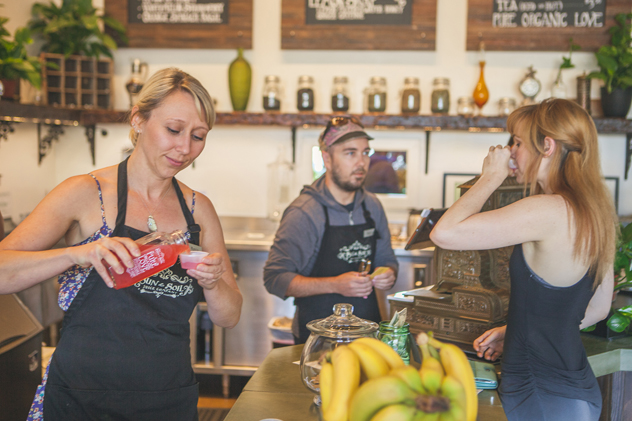
Beet Lemonade, a 16-ounce juice fusion priced at $8, includes apple, beet, filtered water and lemon. Deep purple in color with a bold beet flavor, this drink is immediately tempered by the tart lemon notes and provides a full-bodied mouthful.
Both the recipes and drink titles reflect Brown and Kaiser’s personalities and interests. For example, Kaiser’s background in film and animation inspired The Royal Turmeric Bomb and V for Vanilla.
“Molly loves spice, and I love tangy and tart,” says Kaiser. Brown agrees.
“We thrive in creating all the new flavors,” says Brown. “We’re trying to take ingredients that have health benefits so people don’t mind drinking a cinnamon, spinach and honey-flavored drink.”
It all begins with the ingredients. Brown and Kaiser buy seasonal, organic fruits and veggies from local companies like Full Belly, Watanabe and Riverdog farms. They then use the cold-press method to juice the produce and also hydraulically press its pulp to gain up to 30 percent more juice. Zero waste.
“The cold-press method is awesome because it uses a slower rpm blade. So, it doesn’t heat up the produce as much as a regular juicer would,” explains Kaiser. “It also reduces oxidation, which means you retain more of the nutrients in the process. That allows us to be able to bottle [the juice] for three to five days.”
Sun and Soil also provides its customers with access to the store’s “Ingredient Profile” that conveniently sits at the juice bar, which lists the reasons and health benefits behind each fruit, vegetable and spice blended into a juice or smoothie combination.
“We just want to help people feel good, and show that it’s not unattainable. It’s not a crazy, drastic process,” says Kaiser. “We’re not a program. We’re just a different option for your daily routine. Just know we’ll be here for you.”
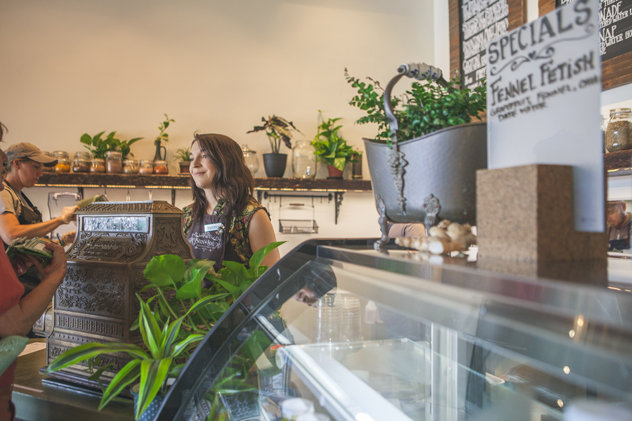
Sun & Soil is open from 7:30 a.m. to 6 p.m. Tuesday—Saturday, and 9 a.m. to 4 p.m. Sunday and Monday. For more info, visit Sunandsoiljuice.com or call 916-341-0327.
Device Brewing Company’s Ken Anthony Shows Passion in Every Pint
When I meet up with Device Brewing Company owner Ken Anthony, he’s visibly exhausted and endearingly blunt.
“I can’t really keep up with much but my beer. I don’t really care about press and that sort of stuff. I just brew and it kind of consumes me whole,” he says.
With one sip of his beer, you’ll understand exactly why he doesn’t have to.
Tuesdays are brew days at Device. Anthony spoke to me while he plugged and unplugged hoses, checked brew temperatures with enormous thermometers and busily paced back and forth in front of his brew kettles and fermentation tanks. He has been doing this same thing at his Power Inn brewery since at least 5 a.m., and has that brewer’s beard Sacramento is starting to become familiar with.
“I may or may not have paced through here sobbing a time or two,” he jokes, “It’s a tough job, believe it or not. There is a beautifully industrial nature to it.”
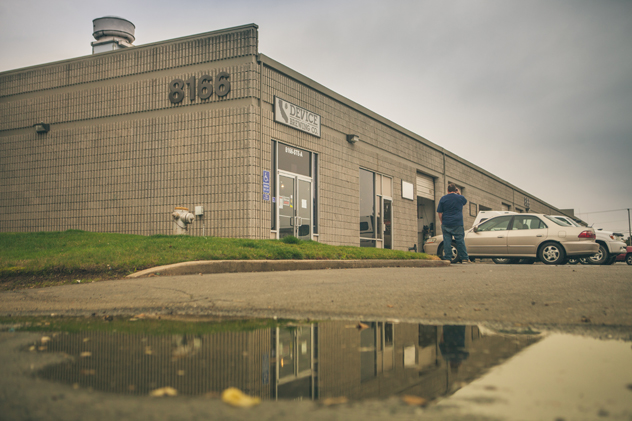
This wasn’t always how Anthony spent his days. A little over two years ago, he threw in the towel as a structural engineer, where his work left him underappreciated and under stimulated. Within a short time frame, he and his wife Melissa moved from San Diego to Sacramento, welcomed a son as well as pursued a new business venture: Device Brewing.
Anthony’s brewing background comes from little more than home brewing experience and a mature beer palate that he credits his father for imprinting in him from a young age. His Friday rituals growing up would be to eat pizza with his pops and have a few swigs of Anchor Steam. Anthony fondly remembers the moment when he was able to tell the enormous difference between craft beer and mass-produced beers like Budweiser.
Now, Anthony is his own boss in a business “that’s 95 percent hard labor and cleaning,” he says.
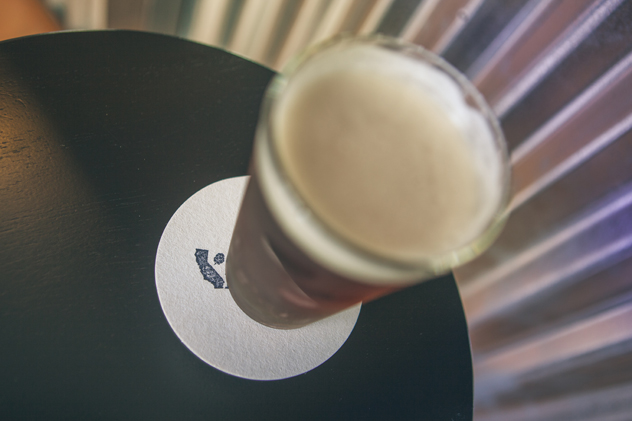
He barely keeps up with the demand for his beer.
When the taproom is open, it is always packed. Kegs are constantly blowing, and all beer brewed is consumed not long after. It seems that folks know where to fill their cups with the proper suds.
“We are only open a very limited number of hours a week,” Anthony says, “and we just get massively slammed every hour we are open. It’s awesome.”
Device Brewing is one of the first nano-breweries in our area. A nano-brewery being a small space with more limited brewing capabilities. Four-barrel kettles of beer are artisanally crafted about every two weeks. Currently, Device is looking into getting seven-barrel fermenters so they can double their production within the next year. This is an operation that will likely require the brewer to work 18-hour-long days.
There are a standard six beers usually on tap with a few rotating specialty beers such as a Track 7 collaboration and a black IPA. “What makes brewing tricky,” says Anthony, “is finding a constant in brewing and keeping a great beer true.
“Yeast strands are constantly changing and the art lies in being able to detect them and craft the beer as so.”
Sacramento’s beer scene is seemingly growing exponentially, but Device Brewing Company is making its way to the top of grain rightfully beside Track 7, Berryessa and Knee Deep brewing. Brewing beer is complicated. Yes, it’s delicious and fun to drink, but brewing craft beer is truly a labor of love. Brewing beer is expensive, it is physically strenuous, scientific at times and infiltrated with complicated aspects of business and legalities…all things that brewers like Anthony have become well acquainted with. However, Anthony is one of the local brewers who is managing to keep it small, off the grid, high in quality and extremely successful.
“I think that the Sacramento beer scene is something to be proud of,” says Anthony. “It’s not nearly up there with places like San Diego or Portland, but in a short amount of time, we have come a crazy long way.”
Ken Anthony will be a prominent fixture in this year’s Sacramento Beer Week, with Device kegs making an appearance at the Sacramento Brewers Showcase at the California Auto Museum on Feb. 27, 2014 and Kupros Bistro on March 1, 2014 among other locations. For a full rundown on where to find Device Brewing Company, go to Devicebrewing.com. For more about Sacramento Beer Week, go to Sacramentobeerweek.com.
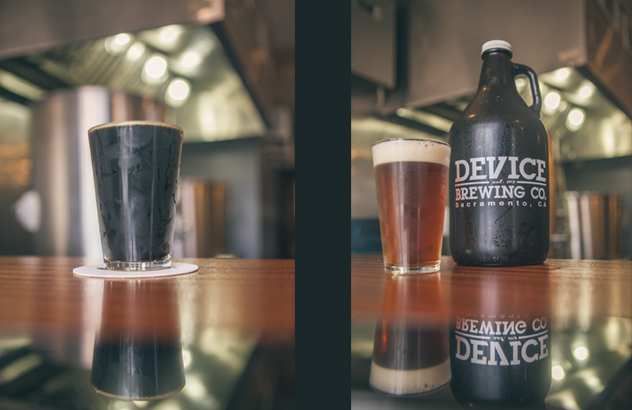
Beer Notes
Words by Rob Lund
Now that you know the story behind Device Brewing Company, the question remains: How’s the beer? Here’s a rundown of Anthony’s impressive array of brews.
Derby Gurl American Amber Ale
The first beer in the lineup was the Derby Gurl American Amber, coming in at 5.2 percent ABV. Derby Gurl filled the glass with a true amber coloring and a thin lace of white head. While most Ambers tend to fall short on aroma and taste, Derby Gurl was bursting with caramel and roasted malt aroma. The first sip awoke the palate with a mild bitterness, and finished with a touch of caramel. The light body of this beer makes it especially easy to drink.
Whisper Sweet Nothings, Sweet Stout
The second beer in Device’s arsenal was the Whisper Sweet Nothings, Sweet Stout at 5.5 percent ABV. Although the name is a bit of a mouthful, the flavors did not disappoint. The beer was a beautiful midnight black with a dense toffee colored head. Coffee and bittersweet chocolate rose from the glass giving off a luring aroma. A smooth and creamy body gives way to layers of semi-sweet chocolate and a slight roast. The sweetness of this beer comes into play on the initial sip, and is caused by residual sugars left behind by the yeast.
Integral IPA
The Integral IPA was our natural progression through the beers. Device’s Double IPA holds an alcohol content of 7 percent, and is brewed in the West Coast style using massive amounts of hops. When set on the counter, the liquid in the glass was a hazy, tangerine hue, with a creamy white head. Enormous tropical fruit scents, with dank and resinous undertones came from this beer. Staying true to the West Coast style, the flavors were dominated by citrus fruit and a touch of bread-y grain flavor on the finish.
Russian Imperial Stout
Nearing the end of our tasting tour, we stepped into the abyss with the Russian Imperial Stout. This 9.5 percent ABV beer hides its alcohol incredibly well by masking it with chocolate and dark roasted coffee. This beer really changed into something incredible as it rose a few degrees in temperature. As it warmed, the aroma opened to a bouquet of fresh ground coffee and a spiciness of tobacco. Being a Russian Imperial Stout, this beer was definitely driven by hops leaving a sticky bitterness on the tongue.
Basilica 3XIPA
Saving the biggest and probably most popular Device beer for last, we found ourselves staring down the 10.5 percent ABV Basilica Triple IPA with Mosaic hops. This hazy, orange brew had an incredibly potent hop aroma that could be smelled from several feet away. Unlike the Double IPA, which had more citrus notes, the Basilica was driven by tropical fruits, lending a sweeter aroma. Overripe stone fruits such as peaches and nectarines were some of the flavors that came to mind, along with a sweet malt backbone that balanced the aggressive hops. Basilica is a remarkably smooth beer that drinks like something with half of the alcohol content.
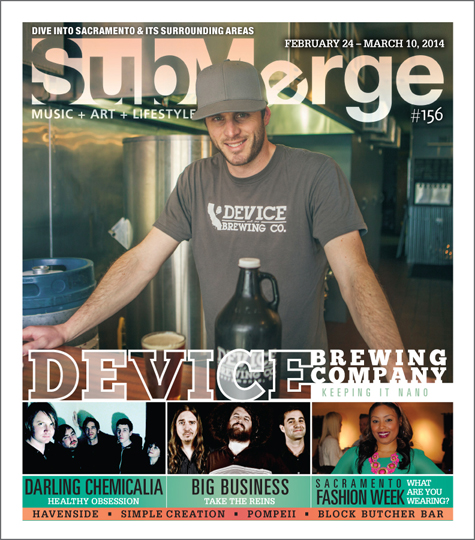
Island of Black and White Descend from a Reno Studio with a New Album in Tow
Alexander Graham Bell once said that when one door closes, another opens.
This was precisely the case when Island of Black and White lost its drummer hours before a show and band manager Nawal Alwareeth stepped up, picked up a pair of drumsticks and filled in without missing a beat. No small feat for the fledgling drummer, whose previous drumming experience consisted of banging on table tops and the occasional whack on the bongos.
“I played some percussion, like hand drums…and playing on tables and that kind of thing, but never a drum set,” Alwareeth says. “Chris [Haislet, founding member] said that we had a few hours to practice before the show [in] Humboldt so that’s what we did.”
“She knew all the songs, so it was perfect,” Haislet adds.
A caribbean-drenched fusion of funk, reggae, rock, folk and blues, IBW emerged from the foothills of El Dorado County in 2004 when multi-instrumentalist Haislet—his musical repertoire includes piano, guitar, accordion, melodica, flute—and a friend transformed their jam sessions into a full-fledged band. And, like the music they play, the band’s lineup has evolved; but at its core are Haislet, Alwareeth on drums and vocals, lead guitarist John-John Baguio and Justin Maddux getting down on bass.
“We play a lot of reggae and we play a lot of blues,” Haislet says. “And our favorite kind of music to play is reggae and blues. We listen to all different types of music. Good music is good music.”
“I think it stems from just playing music you love—music you love listening to,” Alwareeth adds.
While Island of Black and White has been celebrated for its idiosyncratic take on covers of classic funk, blues, rock and soul jams, it’s this love for music that prompted the band to also amass a prodigious catalog of its own original tunes. Tunes they’re now able to share with their large fan base on their debut album, aptly titled IBW.
IBW landed a producer for their debut release after winning the Hard Rock Battle of the Bands round in Tahoe in March, when their performance piqued the interest of veteran producer Douglas Patrick Vaughn—a staple of the Reno, Nev., recording scene for nearly 30 years. After having saved up money from their shows and throwing an album fundraiser in April for recording fees, the band hit the road and trekked up the hill to Reno to lay down the tracks on their first serious foray into the recording booth.
“We met Doug [at the Hard Rock Battle of the Bands], he was the sound guy, and told us he had a studio in Reno. He offered us a good deal at Sierra Sonics Recording Mansion, and they were just super cool people, super friendly and an awesome studio,” Alwareeth says. “We went there a few different times; we kind of started with one song then worked our way up. Then we [went home], saved a little bit more money and went back and finished the whole album. Doug also mixed and mastered the album with us so we spent some more time together and did that.”
The 12-track LP, released on Sept. 20, 2013, emerged out of everyday life experiences and draws heavily on their varied backgrounds—Alwareeth was born in the United States but raised in Egypt and Haislet hails from El Dorado County.
For instance, the album’s closing track, “Egyptian Lullaby,” is a serpentine jam that weaves in and out of tempo while incorporating Haislet’s honeyed vocals. A rattling tambourine slithers in and out of the track as gusts of energetic notes emanate from an accordion, while the lyrics pull inspiration from Alwareeth’s Middle Eastern roots.
“The songs were ready, and had been ready for a while,” Alwareeth says. “We were waiting to find the right person, and the right place, [and] the right time. It was awesome. It was perfect.”
“And the right price,” Haislet adds.
Their live shows are highly improvisational and have been known to run three hours in length, but the duo says that the ebb and flow of each performance relies heavily on the energy and vibe of the crowd.
“I think we have a good time,” Alwareeth says. “We enjoy what we do, and I think everything we do when we get up there [on stage] is on the fly and in the moment and whatever we’re feeling, and whatever the crowd is feeling, it all affects it, I think. We just play and have a good time and all of sudden three hours is over.”
Bringing this off-the-cuff methodology of performance into the recording studio, however, forced the band to focus this freewheeling style into a concise and deliberate vision.
“We definitely had to go about it a different way,” Haislet explains. “When you’re playing a live show, and when you’re recording, you’re kind of painting a picture and both [venues] are different in how you paint that picture. I think the hardest part for us was making the songs shorter.”
“Instead of 10-minute jams we had two [to] three-minute jams,” Alwareeth adds.
As solid contributors to the local music scene in and around Sacramento for nearly a decade, Island of Black and White has established itself as a soulful, musical powerhouse. Having played for the heaving crowd of thousands at the 2012 opening ceremony at Cesar Chavez Park’s Concerts in the Park series, the Hot Lunch concert series at Fremont Park and the Cosmic Family Gathering in Placerville, their music has gained a substantial and loyal following.
The band’s frenetic energy is only matched by its jam-packed tour schedule. With shows stretching up and down the state from Tahoe to Sacramento and as far south as Los Angeles, the quartet has performed at small coffee shops, restaurants and local hot spots like Harlow’s Restaurant and Nightclub.
“We play four shows a week,” Alwareeth explains. “We have some weekly gigs and then some weekend gigs that we do, but this is our quiet time. Summertime is crazy for us.”
“We get through it by getting lots of sleep,” Haislet chuckles.
Looking forward to their upcoming performance, including a local CD release show at the venerable Torch Club on Nov. 29, 2013, Alwareeth and Haislet, who met by chance at a Hacky Sack club meeting at Folsom Lake College, say it’s a privilege to play the music they love full-time. And, while their unrelenting tour schedule can be grueling and downright exhausting at times, you wouldn’t know it from their cheery dispositions and the sheer joy that seems to exude from every pore of their being as they are laying down a righteous jam on stage.
“We’re all about peace, love and music,” Haislet says. “And having fun.”
Island of Black and White’s CD Release show will be at Torch Club (904 15th Street) on Friday, Nov. 29, 2013. To view other upcoming tour dates and purchase the album, visit Islandofblackandwhite.com.
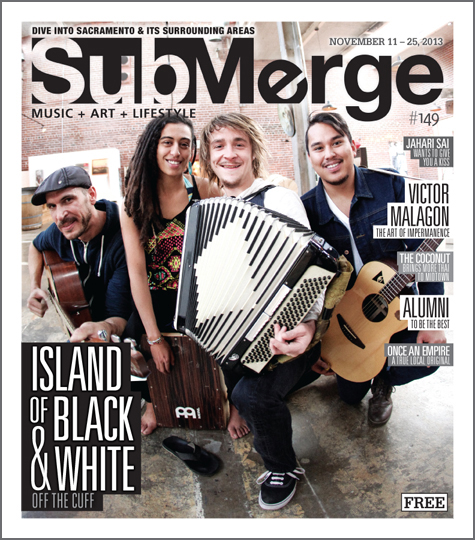
Local singer/songwriter Justin Farren talks about his music and latest album, and why touring pushes his boundaries, in the best way
Introversion arguably produces the best artists. Those who can spend hours holed up in isolation working on a project often emerge with a gem. Land them at a party or social gathering, however, and they’re quickly making a beeline to the nearest bathroom or unoccupied space.
Justin Farren is an exemplary introvert. If he’s not out backpacking or camping, then he is keeping busy on a project—fixing up his yellow truck, woodworking or writing an album in his garage. For this local singer/songwriter, touring means treading outside his comfort zone.
You might not know it if you saw him perform, but it is nothing short of a challenge.
He was in fact on tour as he was explaining this over the phone, camping with some friends in Bellingham, Wash., and prepping for a show that same night.
Touring, he concludes, is good for him. Given any other circumstance, “I’d want to just go hide,” he says. But after a show, he has no choice but to open up and talk to people.
After three or four more shows along the North Coast, he returns to the Sacramento area for his April 6 CD release show at the CSA Event Center, celebrating the release of his album Another Bluebird Day. Then he’ll continue down to Southern California to promote the album.
This is Farren’s third album. With the exception of his friends Brian Rogers on drums and Emily Kollars singing backup vocals, the album is all Farren, from the guitar, bass, keyboard and shakers to the samples of him pounding aluminum cans. This project sums up his last six months, which were spent recording and mixing the entire thing in his garage-turned-studio at his house.
There is nothing obscure about Farren’s songs. Over immaculate finger picking and slide guitar, he sings with lighthearted honesty about life’s tougher blows, compacted into three to four minute folk pop, storytime songs.
“It has these kind of heartbreaking ideas, and I think that the whole album hopefully places these in a light of appreciation,” he says. “Stand in those moments where it would be easy to be depressed, and just appreciate that you got to have those experiences.”
Farren grew up in Elk Grove when it was nothing more than fields, long before it overdosed on suburban steroids. There are no known musicians in his family, though he says there’s talk of a bad-ass accordionist amongst his ancestry. But somewhere along the way, Farren taught himself how to play music, and he’s been at it ever since.
Within the last five or six years, he’s even been able to make a living off it. He’s opened for the likes of Hot Buttered Rum, Matt Costa and Jackie Greene. He was voted “Best Lyricist” in 2010 by Sacramento Magazine and “Best Musician” in 2009 and 2010 by the Sacramento News and Review.
Farren released his last album, Songs from Spare Rooms, in 2008. Those songs were all written in the two years he surfed couches while his house was being built. (It’s worth mentioning that Farren and his now-fiancée built their house in Oak Park from scratch, inspired by a trip they made to Alaska in 2004.)
“We thought, well, let’s just build a house and not think too much about it,” he says.
It’s where the two currently reside, with three dogs, two of which are lovingly named Pickle Breath and Mr. Pig. Indeed, they have been sources of inspiration. Pickle Breath inspired the song on the album, “Sometimes I Like to Kill Things Too.” Go on to Farren’s music page on Facebook, and you will see several flattering photos of Mr. Pig (who, by the way, needs a new happy home).
“Mr. Pig, the one in all the pictures, is maybe the nicest dog I’ve ever known,” Farren says with utmost sincerity. “So I can’t take him to the SPCA, I have to find him a home.”
Other than Mr. Pig, here is an excerpt of more interesting things that came up in the conversation.
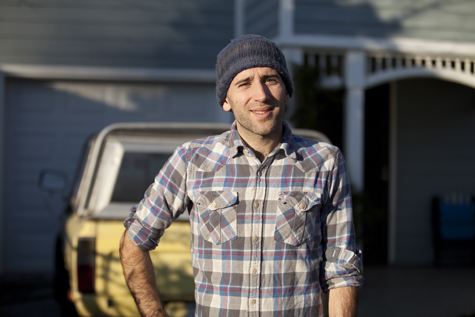
So we were talking about your place in Oak Park, how long ago did you build that?
We started in 2005. It took a couple years, we moved in in late 2007.
What prompted you to do that?
The summer before, in 2004, my girlfriend and I went and worked in Alaska in a really tiny little town called McCarthy, just as something to do. We drove up and we worked in this little town, and a lot of the people up there build their own homes. Over the five or six months that we were there, we were talking to a lot of the locals and kind of getting inspired, like that might be some cool thing to do. We decided we wanted to try it when we got home.
I read that you consider yourself a little bit of an introvert, so I was wondering if touring was a challenge.
Oh yeah, it’s a huge challenge. It always has been and I think it always will be… The more tours I go on, the higher my threshold gets. I am able to comfortably sleep on a stranger’s couch and wake up and make them breakfast, and have a morning conversation with someone that I don’t know. Fifteen years ago that would have been mortifying and terribly difficult for me to even imagine doing.
I think maybe that’s the best thing I can do as a human being, is hopefully raise that threshold. Because the threshold is higher, I’m able to learn from more people and be around new ideas and broaden my horizons. So touring represents all of that, all at once to me, because I’m out and I’m sharing something that’s so important to me with people who have no idea who I am a lot of the time. It forces me to swallow my pride and just do my best and play the song, and hope someone gets on the page and buys a CD or whatever.
Do you generally write first-hand accounts when you write songs?
Yeah, in general. There’s a lot of first-person and talking about stuff that is affecting me. I’ve always admired writers who can read a book and write a song about a character in the book. I feel like I’m a selfish songwriter in that way, I’m always just writing about myself. But that’s kind of all that I have, that’s what comes out all the time.
It’s an outlet, then?
Yeah, it’s the outlet. It’s an outlet, and I try to think of the songs as a byproduct of living, and I want to live a really fun, interesting life, so that I can have fun, interesting songs.
Your music was featured on Laguna Beach?
Yeah, one of the songs I wrote was featured. It’s from the first album. It’s a song I wrote about my band breaking up. I had a piece of shit car, and I didn’t have much going on in my life. And they played that song during a scene in Laguna Beach when they were complaining about their car, and they were driving some fancy Escalade or something, and they were talking about how their car sucks. It’s an awful show. It’s terrible.
What is your least favorite song in the world of songs?
Oh my God, least favorite song in the world? I have to think about it, because that’s such a huge question. There’s just a dense forest of songs that I hate so much. I feel like it’s maybe the biggest question that we’ve talked about. For me to say that I hate it, I have to really mean it.
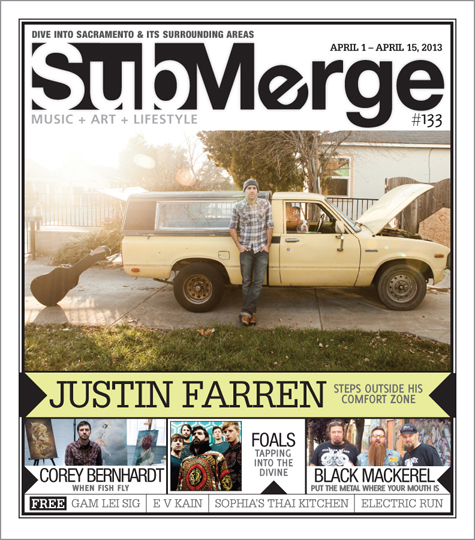
Justin Farren will celebrate the release of his latest album Another Bluebird Day at 7 p.m. on April 6, 2013 at the CSA Event Center, located at 1275 Starboard Drive in West Sacramento. For more info and to order tickets, go to http://justinfarren.com/ or http://www.csaeventcenter.com/
Submerge chats with Jason Maggio, founder of Sacramento-based headwear brand Official Crown of Laurel
What happens when a creative and well connected thirty-something ex-magazine publisher has a little in between time after selling his company? Does he stop working and just relax, ignoring the entrepreneurial spirit that beckons from within? Sacramentan Jason Maggio sure didn’t in 2007 when he founded a premium headwear company called Official Crown of Laurel, or Official for short. Maggio saw a void in premium headwear with influences coming from skate, street and DIY fashions, and so Official was born. Fast forward a few years and his products have been seen worn by celebrities and tastemakers all over the world. Retailers both big and small proudly carry his products, and much like the shoe companies that attract sneakerheads who collect as many pairs of shoes as they can, Official provides nearly endless options of stylish headwear to an audience with an insatiable appetite for dope street fashion. According to the company’s philosophy posted on its website, “Official regards its headwear as a crown, a statement, an exclamation point and sometimes a simple complement to bigger and bolder things.”
Submerge recently sat down with Maggio inside Official’s nearly 3,000 square-foot warehouse space in downtown Sacramento, which they share with another locally based skate/streetwear brand, Lurk Hard, for the following interview. We touched upon on why he started the company, what it’s like to do business in China, how they recently signed professional skateboarder Stefan Janoski and more.
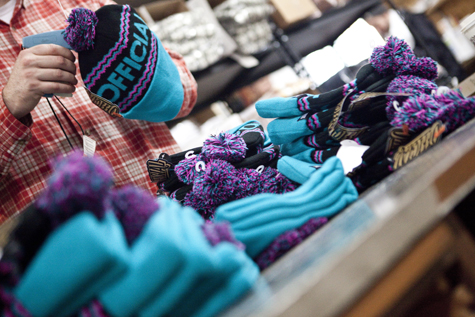
Take me back to just before Official started. What were you up to job wise?
I was doing a magazine called Vapors. We sold it to a publisher in Los Angeles, and I stayed on for another two years just working as the art director, and I’d have to go down like every other week. I just got tired of it. I have a family, and so it was stressful.
What were you going down there for? To meet deadlines and whatnot?
Yeah, everything. All kinds of stuff, editorial, marketing, events. The magazine was in a good place with the publisher, so it wasn’t like I was ditching it or anything. They were fine. It seemed to be a good time. So I was doing some freelance design, and I did some stuff for a brand that was doing a little hat stuff.
So that’s how you got into the headware game?
Yeah, and then at some point I was like, well I’m here in Sacramento, they were in L.A., so it wasn’t optimal. Basically I decided, OK, I’m going to do this on my own. I’m going to just start doing hats. We produced in California at the beginning and made a ton of mistakes. The hats cost us a fortune for each piece, and there was no profit anywhere.
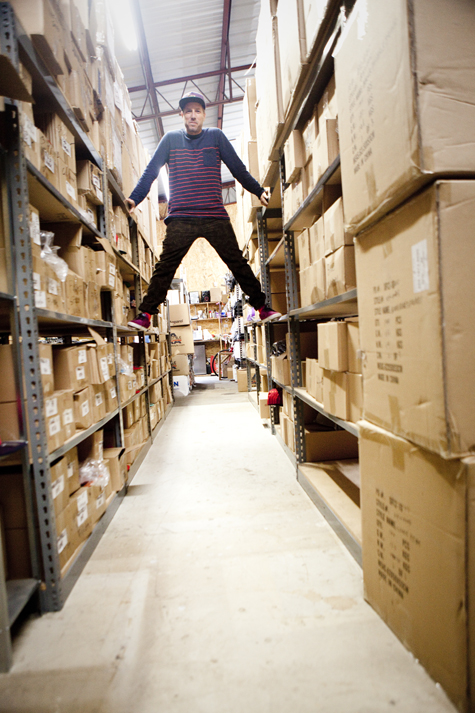
But it was a learning curve, right? Nothing happens easily and without mistakes.
It was. It was totally worth it. It’s so funny, because even at that age…let’s see, how old was I? I was 35, so you’d think that at this stage in my life, I probably shouldn’t be making these rookie mistakes. But they’re going to happen, and I guess it’s just how quickly you learn from them.
You were coming from a business background that was somewhat related, in that you may have had mutual connections and whatnot, but this was a totally different thing than publishing, right?
Yeah. In a sense I was an entrepreneur with the paper, because we started as a cut and paste ‘zine, you know, and we moved it to a full-fledged magazine. That was a process. I enjoyed the process. But then you’re starting over again with a new brand. It was new territory. Building brands isn’t necessarily a new experience, but the production and distribution and all that, you do have to learn a lot. There was a learning curve there… So we had a really good first year at Official and we were on a good route, lots of good response. That was the idea, for me, I was looking at what was being offered, and just saying that we could do something that wasn’t being offered, and something we really liked. That was what was going to differentiate our product from what was already out there.
Why a headwear company? Why not footwear or eyewear or something else?
It was a little bit of just right place right time, and a little bit of looking at the market and seeing where I thought there were some holes. You see the thing is, with headwear, generally there are big brands like New Era. They are just slow to move on trendy things. So that’s really where we started, was moving on trends. So if we could be quick to market, and get something done in six weeks and get it out there, that’s way faster than the bigger brands that are planning a year ahead.
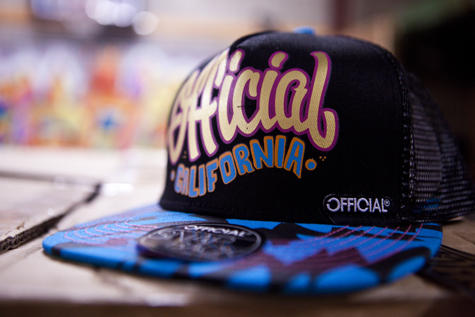
So early on you had the advantage of being on top of trends and what was hot. In the digital age, everyone wants everything yesterday, right?
Yeah, and by the time the stuff comes out, sometimes it’s too late. That was really our business model. We literally had a delivery every two weeks of two or three styles, so it was just a quick to market delivery and shops loved it. Especially with the economy then, people were buying stuff like there was no tomorrow.
So you mean sort of like sneakerheads with all their different pairs of shoes, people want multiple hats?
Yup! The cool thing is that hasn’t changed too much. It’s a cheaper price point, it’s a lot cheaper than a hundred-dollar pair of shoes.
What happened with Official when the economy started to tank back in like 2008, 2009?
So the economy fell off, and we had to just become a skeleton and weather the storm. I was working out of my house. Everything we have here was in the garage, and it fit, so it wasn’t a lot. Ran it out of my house after that for three years, no offices or anything. And eventually it just started to slowly build again. My idea was, it’s going to be bad, it’ll get better, and let’s just continue doing what we’re doing and we’ll learn a lot. So, what was happening was we were producing in California and it was costing us a lot. We looked at China as an option early on and made a couple trips.
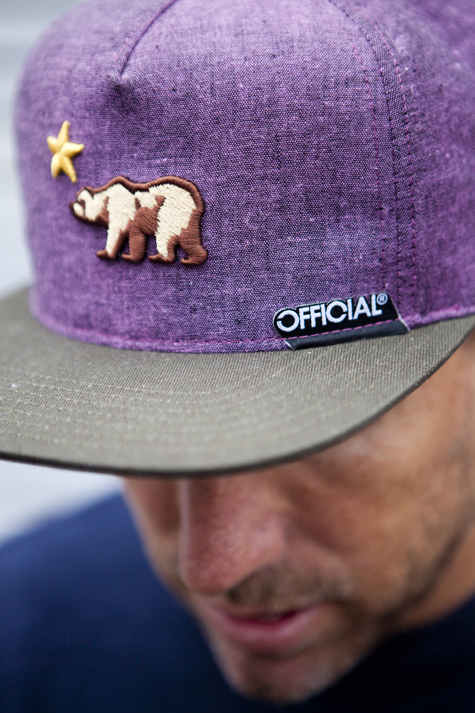
Tell me about the first time you went out to China for manufacturing research. That must have been a mindfuck.
The first time was pretty crazy because we went to a northern city called Qingdao. It’s a northeastern province and it’s so tiny, and I didn’t know anything about Chinese business culture. There’s a whole thing, you know, if you go to China to visit a factory you have to go out to dinner with them. You drink with them, and you eat really weird stuff. And they just love doing that. Sometimes I think it’s malicious [laughs], and sometimes I think they just really want to show you their culture. So that was pretty tricky.
Was it a hard decision to move your production to China?
Moving our production to China was a tough decision, because we were actually pretty proud that [the hats] were made in California. But I think it’s a trade off. I think that moving to China, of course, we don’t get to employ manufacturing here, but I get to have a business and have other employees because I can get that product made in China more efficiently and better than we can do here. What I mean by that is, like, we’re just not a manufacturing country anymore. Back then when I was getting a hat made here, I would have to get the silkscreen done at one place, then the lid was made at another place, so it’d take six weeks to get it shipped back over here. Then have all that applied and sewn here in a hat factory, and still the quality was not up to what we could get in China, and it was costing $11 per piece here, whereas a hat now is costing us way less. I don’t want to necessarily say the price, but it’s way less. And it’s better quality, and we can get everything done in one stop.
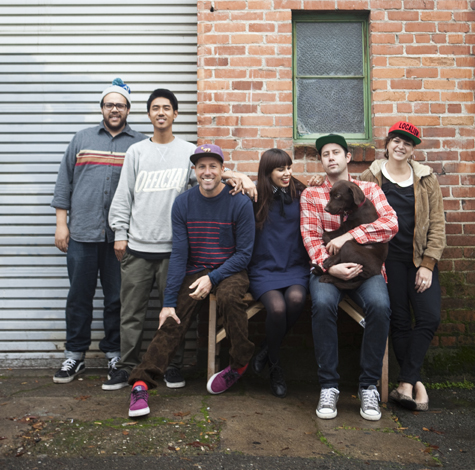
You’re going out to China again before this interview will even be out to source for fabrics for your Spring 2014 line. You guys are now designing for lines a year ahead of time?
Yeah, a year out. See, what we were talking about earlier, we’ve become that beast that we were able to capitalize on and take advantage of before when we could be quicker to market. Now we’re designing stuff a year out, and it’s kind of scarier…this is the first time we’ve been that far out. We’ve always aspired to be that far out but like sampling always takes a long time and you run into hiccups. Plus, when we can plan that far out, we can ship more stuff by sea and that really reduces our costs a lot.
Trends can change quickly, does that worry you?
Yeah, and there are smaller companies that can be faster to market with the trends. What we’ve learned is we’ll still have that stuff even a year out. Our bigger retailers will say, “I’m buying for fall right now,” so we have to have fall done! But, we still will get some things quicker to market.
So you’ve found middle ground, it seems, between being too big to move on trends and being too small. Agree?
Yeah, I agree. And then on top of all that, you have to have confidence that what you’re doing is dope and it will stand on its own. You don’t have to worry about the trends. We just have to be that solid headwear brand, not somebody chasing trends. You just have to have that foundation so people can rely on us for headwear every single season and they know they’re going to get good stuff.
The 2012 winter line was released Nov. 1. What were the inspirations behind this season’s designs?
For winter, I don’t know if I want to expose this, but we go pretty safe, because it’s the holidays. A lot of brushed wools, and then some trending things like a lot of camo and sports colorways together. So, like, the 49ers colorway but with camo–that kind of stuff. In the campers we did some metal label stuff, which is kind of cool.
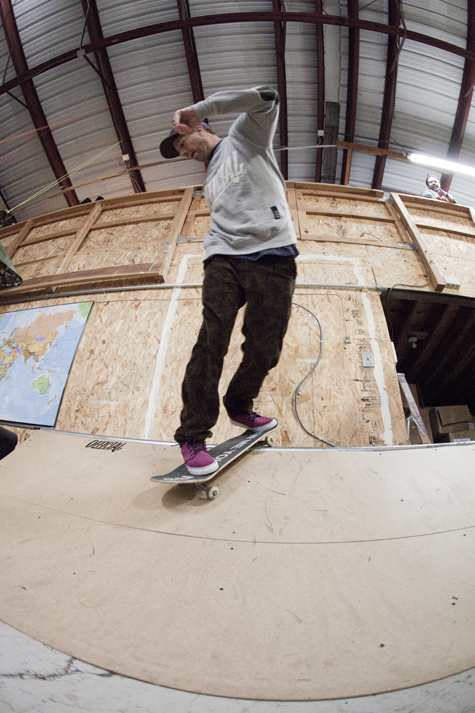
Do you have an Official skate team?
We’ve developed a program that is still in the works, but we have hired Jeff Landi as our team manager. He’s a local guy that’s a staff photographer at The Skateboard Mag. He’s amazing. He’s a good friend. I’ve known him for a long time, so it seemed pretty natural. He has good rapport with so many pros, so he’s building a team. We have a really good list of [amateurs], but right now the pro that I would like to mention that we’re launching with is Stefan Janoski. He’s so hyped and energetic about it. All the stuff is from him, all the designs we’re doing for his line are from him.
That’s cool! To wrap things up, tell me about Official’s relationship with local hip-hop artist C-Plus, because I know you guys are pretty tight, yeah?
It’s really natural. We owe him a lot for the input he gives us. He has a really good sense of style that’s both Sacramento-centric but also a broader perspective, and that’s important. I think that our stuff has a Sacramento and Northern California aesthetic to it, but also can obviously go beyond those boundaries.
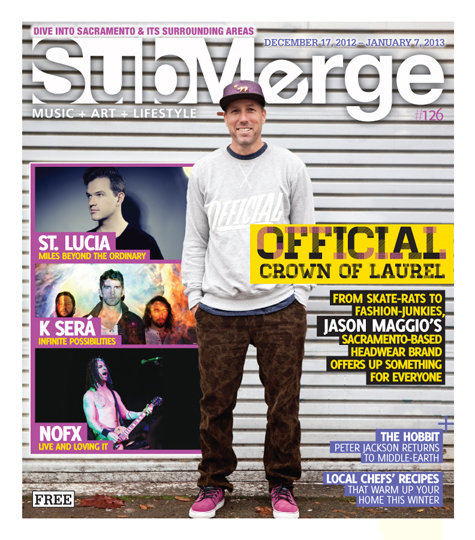
Learn more about Sacramento-based headwear company Official Crown of Laurel and shop for their latest gear at http://theofficialbrand.com/. Look for their collaboration with pro skater Stefan Janoski to drop in their Spring 2013 line.
Not many bands sport a badge of longevity inching toward eight years, but plenty of musicians can include their names in the pages of Be Brave Bold Robot’s local history. With roughly 23 former players fondly dubbed “Forever Members,” BBBR is a staple in the folk scene for good reason. If mad scientist, Dean Haakenson, hears you can play an instrument and likes you as a person, you can write your way into his project…forever.
My night with Be Brave Bold Robot did not begin with an unsettling ride to West Sacramento in Haakenson’s Technicolor Volkswagen Bug, but a few points of interest are worth a mention prior to him offering a lift in his shrunken, two-seater Partridge Family bus of a VW. As follows: I snuck into an empty warehouse along with the band and a photographer for a photo shoot. Cut my hand lifting a giant disco ball. There was a potato sack race. Haakenson sweated through two shirts. No one discovered us. No one was handcuffed or fined for trespassing. No vandalism occurred. My palm only bled for a minute.
But in Haakenson’s gutted and rusted VW, I sat shotgun to a man who rolled down the driver side window with a pair of pliers and casually talked of how his car, a present from his mom, stalled regularly as we took the Highway 50 on-ramp headed toward West Sacramento. I thought of the band’s moniker as he shimmied the VW into traffic and it strained its way to the speed limit. Be brave.
We arrived safely to Haakenson’s home, and I was ready for a beer, for there is no finer way to gain a stranger’s trust or settle one’s nerves after relinquishing your own fate into his hands. Haakenson and his drummer Michael Ruiz claimed two of the four mysterious wheelchairs on the back patio–why does one man have so many? The rest of us (bassist Matty Gerken, viola player Catie Turner and saxophonist Jacob Gleason) sat in metal chairs or benches with microbrews in hand. Like all interviews, the awkward phase deteriorated and stories were flung freely, which led to how one becomes one of those Forever Members listed on Facebook. Over the years Haakenson developed a simple criterion: play four shows. It may take four consecutive shows, or it could take eight years, but until you’ve played four you are not an official Forever Member.
“It’s a credit to Sacramento to have so many people I’ve met over a number of years join me,” he said and he was right.
To my left sat Jacob Gleason, soft spoken most of the night, but he was first to share his admiration for Dean that led to joining Be Brave Bold Robot. It began with loving the first self-titled record and led to Gleason “[bugging] Dean enough that he finally started letting me play with him.” Going around the table, Catie Turner joined after seeing BBBR live and striking up a post-set conversation with Haakenson, who upon learning she played viola gave her a recording and let her write herself into the music. She’s been a member since.
“He was like, ‘You should play on my record,’ and I said, ‘You’ve never even heard me play,’” she recalled.
“It’s a Dean thing,” she said. “He’s so hands off. He didn’t know me, didn’t know my playing. It was unlike any experience I’ve ever had with an organized band.”
Matty Gerken offered an anecdote on the BBBR’s rotating cast: “One time we played a show at Sac State and in order to play that show we needed to have one Sac State student in the band. So we brought in Chuck; good student, he’s from Iowa, like me. He had enough parts in the songs to get us qualified to play. He was a member for one show.”
Gerken saw Be Brave Bold Robot play based on the name. He caught a Fox and Goose show, went to an after party with the band, which resulted in him mastering the first record. “I sort of learned all the songs from listening to them over and over while mixing them,” Gerken said. “When Tommy [Minnick] the former bass player decided he didn’t want to play anymore, I said, ‘Well, I know all the songs incidentally.’”
Haakenson’s lackadaisical approach stems from understanding his friends and band mates have their own lives and careers. Without the pressures of commitment, being in a band can always be as fun as it sounds. No one’s government job is at risk, no one’s missing PTA meetings and no one’s on heroin to deal with the pressure of stardom. Members come and go and come back again when they have time or miss the fun of being in BBBR.
“It changed my life here,” Turner said, who hadn’t played in a band since leaving San Francisco.
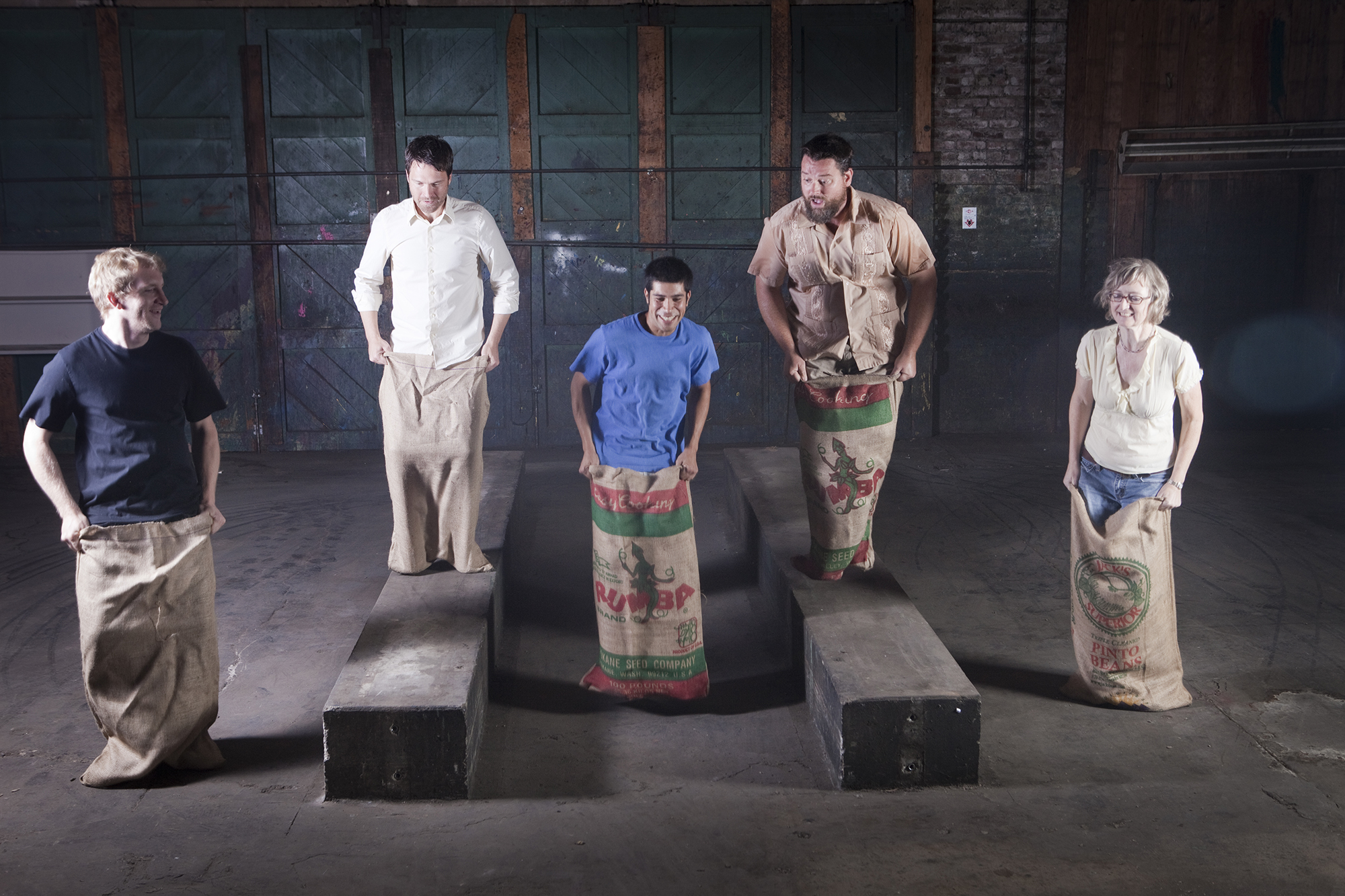
Haakenson exudes gratefulness beyond his once a member, always a member attitude. The tape recorder clicked; side A was over. With everyone in good spirits, we agreed to call it and begin band practice. While guitars were tuned and more beers were emptied into mason jars, Haakenson handed me a copy of 2010’s Take a Deep Breath. He directed me to the living room where the original artwork of Kyle Larsen hung; he had two of Larsen’s pieces. Local writer Josh Fernandez probably doesn’t know it, but he is a cherub muse for BBBR, coining intoxicating limericks that echo through Haakenson’s mind. The new album’s title was partially lifted from Fernandez’s 2008 review, which was recited to me nearly verbatim during our hang out. Fernandez referred to Haakenson as “under a thin sheet of madness,” it led to the title of the band’s upcoming album Under a Thin Veil of Madness.
Under a Thin Veil of Madness began with sessions at Expression College for Digital Arts in Emeryville. “They offer free recordings to bands in exchange for being guinea pigs for their audio recording classes,” Haakenson said. “We went in there for an eight-hour session and got four songs done that are new to this album, and had plenty of time left to record four other songs.”
Going in there was concern of the album being in the hands of pupils, but by the end of their session the band was so close with the students that a kid named Willie Ramsey is doing the Under a Thin Veil of Madness artwork, expanding Dean’s collection of art and adding an honorary band member once again. “I was concerned that we were getting learned on,” Gerken said. “They had an experienced instructor there and it was clear that guy was all business.”
In the eight years of having one of the most recognizable band names in Sacramento, the true source of the moniker eludes Haakenson. He loves that about his band. Before it was his band it was his ‘zine. Prior to the ‘zine it was a graffiti tag by a girl in Arcata, Calif., who claims she saw it done by a San Francisco artist. Some theorize it was lifted from the Isaac Asimov’s science fiction series I, Robot. “I’ll put out a call right now,” Haakenson said. “I’ll pay $100 for the documented source.”
May it always be obscured and tucked in mystery to preserve the legend of Be Brave Bold Robot. It’s apropos to a band that tucks mementos to childhood in its song lyrics and sneaks away from families and responsibilities into a West Sacramento living room to drink, chat and practice like a discovered teenage Never-Never Land.
“I have a child-like way about me, which I think is maybe what makes me endearing to the people I meet on a regular basis,” Haakenson said. “I think I’m OK with confrontation, but I’d much rather make people happy.”
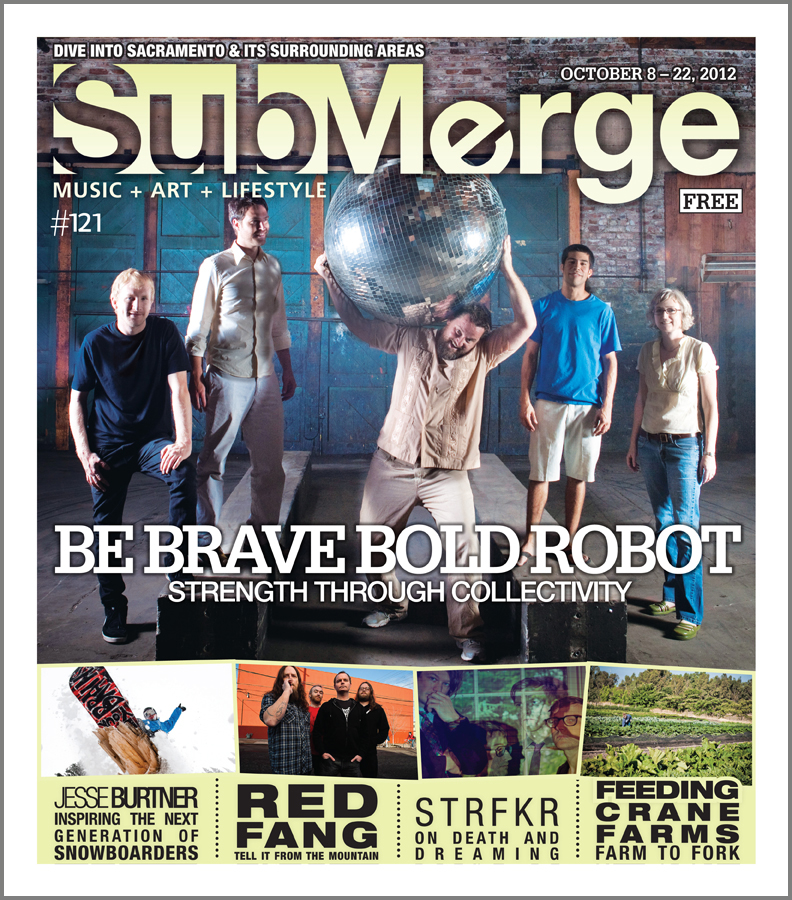
Catch Be Brave Bold Robot when they play Beatnik Studios in Sacramento on Oct. 26, 2012 and celebrate the release of Under a Thin Veil of Madness. Also playing will be Appetite, Cold Eskimo and Buzzmutt. The music for this Final Friday show gets underway at 9 p.m. and there is a $5 to $10 suggested donation.





